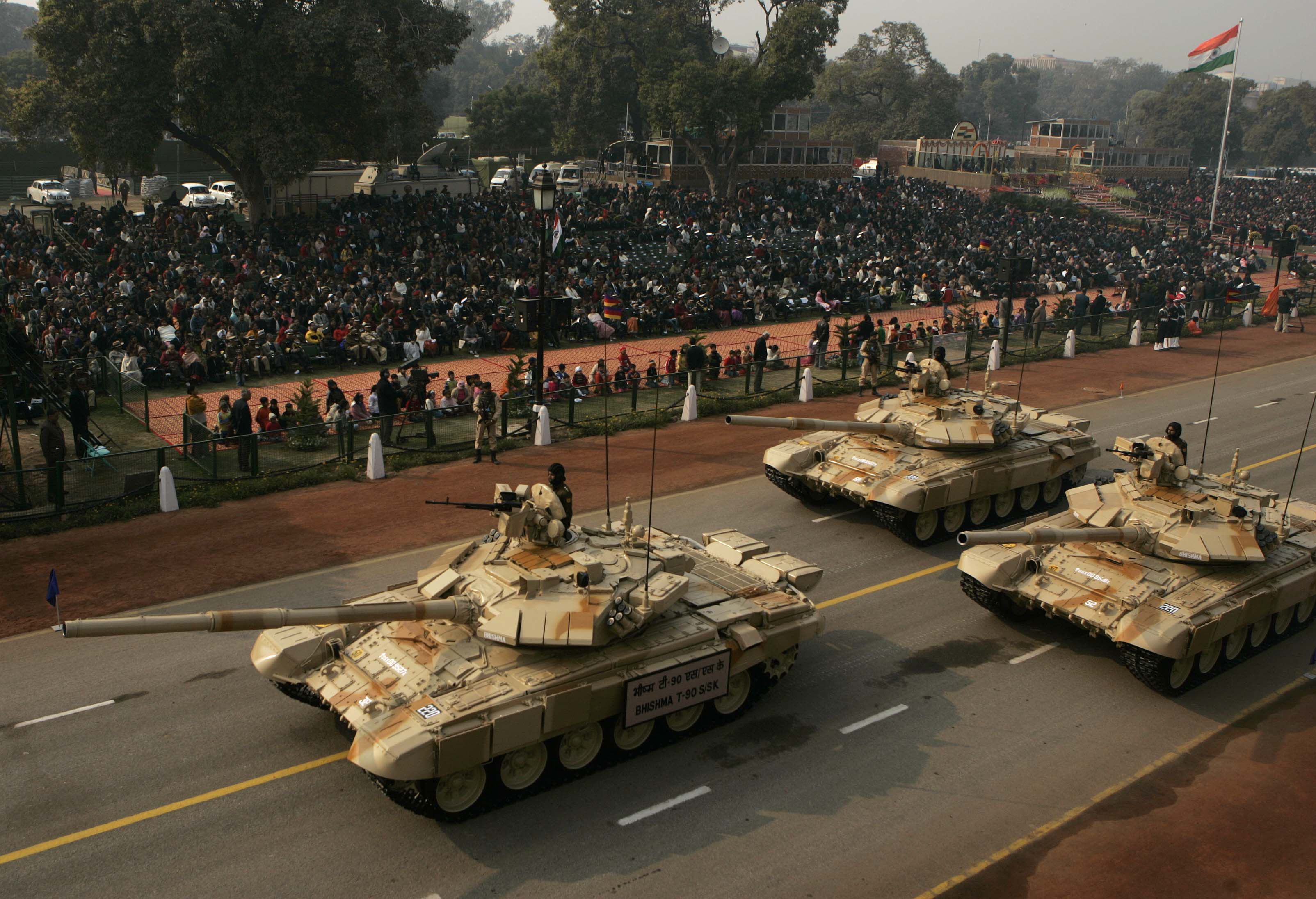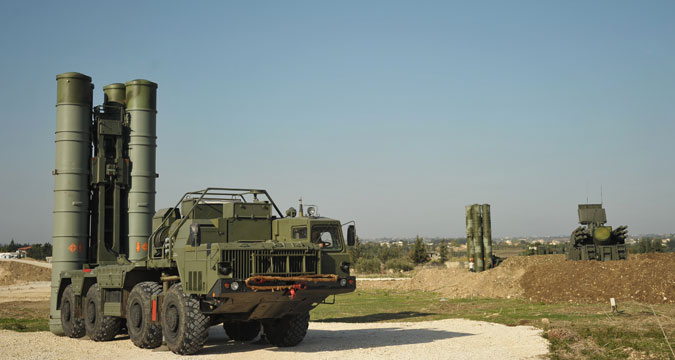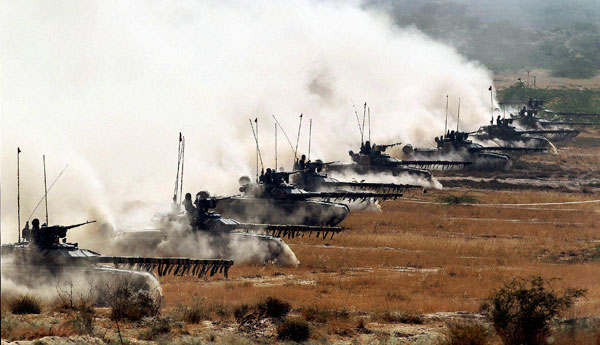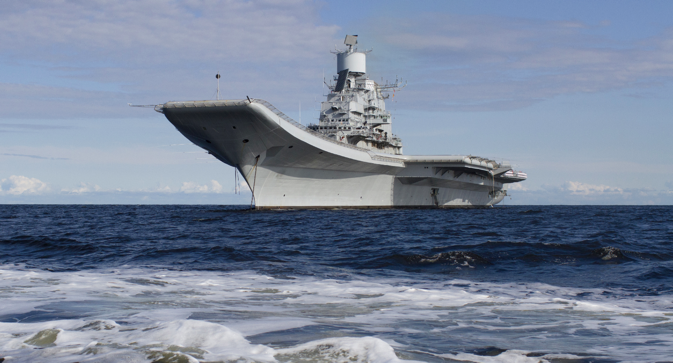Weapons of destruction: Russia remains India’s prime vendor

India is the largest foreign operator of the T-90.
APUntil a few years ago, Russian weapons manufacturers were the unquestioned rulers of the Indian defence sector. That changed with India’s defence diversification programme. With India looking westwards, a bunch of countries – especially Cold War untouchables US and Israel – started nibbling away at Moscow’s market share.
But in one key area – offensive weapons platforms – Russia continues to be India’s preferred vendor. This is in stark contrast to the defensive weapons, transport aircraft and communication gear that New Delhi has sourced from western and Israeli companies.
The Russian philosophy of offensive warfare means the Russian military forces require weapons that can kick in the door early on in a conflict. With Russian weapons you don’t sit around waiting for the enemy to come to your doorstep, but in fact go hunting for the enemy.
AERIAL WARFARE
Each time there is an intrusion into its airspace, the IAF scrambles the Sukhoi Su-30MKI ‘Flanker’ for interception. Whether it’s an unidentified aircraft, drone or weather balloon, the Sukhoi is the interceptor of choice vectored towards the intruder.
Clearly, the IAF doesn’t want to take chances by scrambling the older MiG-21, which being a pure interceptor should be ideal for the task. Nor does it send the multirole – and very capable – French Mirage-2000 for such tasks. Without exception, it’s always the Flanker. With a final figure of 300 or more Sukhois, this wolf of the skies is the best example of a combat aircraft that has captured the imagination of millions of Indians.
Also in the offensive mode is the MiG-29 ‘Fulcrum’, a multirole fighter that provided combat air patrol (CAP) during the 1999 Kargil War. The Fulcrum’s presence on the Indian side of the border ensured that IAF MiG-21, MiG-27 and Mirage-2000 aircraft were able to mount round the clock attacks on Pakistani positions while the Pakistan Air Force (PAF) watched helplessly.
 MiG-29. Source: MiG Corporation
MiG-29. Source: MiG Corporation
The PAF’s American made F-16s that ventured close to battle zone fled in haste after being “painted” by the MiG-29’s radar or after the Fulcrum achieved missile lock on the F-16s. Aggressive CAPs by the Fulcrums allowed the IAF to attack with impunity, ensuring a quicker end to the war.
The F-16 is one of the most successful jets in modern aviation, but its ‘success’ was because it only faced poorly motivated – and small – air forces such as Iraq. When faced with a modern combat jet in the hands of highly professional IAF pilots, the F-16s could only hide, not offer combat. Yet another example of a Russian jet tailored for offensive warfare.
On the other hand, when it wanted additional strategic transport aircraft, India opted for the American made C-17 Globemaster, becoming its second largest operator, plus six C-130J Hercules transporters for its special forces and the Border Security Force. However, both acquisitions were a quid pro quo for the US removing the ‘pariah’ tag via the Indo-US nuclear deal.
In fairness, the C-17 can lift 30,000 kg more than India’s IL-76 Ilyushins, although the Russian strategic transport aircraft has a range that’s nearly 1000 km more. The Globemaster’s extra capacity came in handy while ferrying over 4000 Indians from Yemen in April 2015.
MISSILE WARFARE
Air defence missiles come under aerial warfare, but their modern iterations are potential game changers and deserve a separate category.
India’s existing air defence systems are not just outdated but they belong to the middle of the 20th century. For offensive defence, India is now looking at the S-400 Triumf. It belongs to a class of missiles – only possessed by Russia – that have strategic capabilities because of their long range and supersonic speed.
 S-400. Source: RIA Novosti/Dmitry Vinogradov
S-400. Source: RIA Novosti/Dmitry Vinogradov
An S-400 missile based around Delhi can bring down a Pakistan aircraft over Lahore within seconds of launch, thereby complicating the enemy’s operation. The S-400 is a rare example of a missile defence system that can be employed in offensive mode.
The deal was supposed to go through during Prime Minister Narendra Modi’s visit to Russia in December 2015, but seems to have got stuck. The usual suspect is India’s laborious defence acquisition bureaucracy, but it could also be price.
The India-Russia BrahMos supersonic missile with a range of 290 km is another game changer. Its highly destructive power can ensure quick elimination of well-protected enemy targets such as aircraft pens and communications bunkers. The BrahMos will be the first weapon to be launched in the event of hostilities, which makes it yet another offensive weapon from Russian stables.
On the other hand, when it comes to purely “area defence”, India is developing surface to air missiles – especially the medium range MRSAM and long range LRSAM – with Israeli help. These missiles are designed to bring down enemy aircraft and missiles between 50 km and 100 km.
If enemy missiles are able to evade the layer covered by the MRSAM and LRSAM, India’s own Akash SAM will protect battlefield assets within a radius of 40 km. Incidentally, the Akash was perfected with assistance provided by Russia’s NPO Mashinostroyeniya.
LAND WARFARE
The Indian Army is overwhelmingly a Russian weapons-based service. It is the largest foreign operator of the T-90, the most lethal and well-protected tank in the world. Its ability to cross defences – once considered impassable – has earned it the sobriquet of the “Flying Tank”. India plans to have up to 1600 of these land leviathans, which form the core of its armour spearheads.
The army also has hundreds of Russian BMP armoured personal carriers which are part of its strike forces.
 Indian T-90s. Source: AP
Indian T-90s. Source: AP
Russia seems to have missed out in India’s artillery sector. Providing heavy fire support for India’s Russian tanks will be western guns. The Bofors 155 howitzers from Sweden performed with devastating accuracy during the Kargil War, but additional guns could not be procured because of kickbacks in the deal worked out by Indian and Swedish Prime Ministers.
For the next generation of artillery guns too, India has decided to go West, with the US made M177 howitzers to be inducted into India’s new mountain divisions. Future cannons will come from Samsung-Techwin of South Korea.
Communication systems of the Indian Army are almost totally supplied by American companies.
NAVAL WARFARE
The Indian Navy has had a long – and fruitful – partnership with Russian companies for attack vessels. From the flagship aircraft carrier INS Vikramaditya – and its complement of MiG-29K fighters – to the fleet of destroyers, frigates and missile boats, the navy relies on Russia. For those not in the loop, Vikramaditya is the largest warship ever built for export.
It seems nothing has changed since the 1960s when India first acquired the Osa class missile boats. These boats attacked Karachi harbour during the 1971 War, and the city burned for a week. Interestingly, the missile boats were meant for “shore defence” but in an example of Indian ingenuity, the Indian Navy unleashed the Osas in “shore attack” mode.
 INS Vikramaditya. Source: Sevmash
INS Vikramaditya. Source: Sevmash
As many as 10 of the navy’s 14 submarines – both diesel and nuclear powered – are of Russian origin. During the Kargil War, INS Sindhurakshak – since lost in an accident in port – was lurking off Karachi waiting for the signal to launch its Klub missiles in a reprise of the 1971 War.
The next generation of offensive vessels – Kilo class diesel submarines, Arihant class n-subs and Talwar class stealth frigates – are also of Russian design or make.
Again, when it comes to maritime transport, India has chosen Japan’s US-2 amphibious aircraft over the Russian Beriev Be-200 Altair. Although the Beriev is a proven design and is popular worldwide – Portugal, Greece and Israel among other countries have used it for fire fighting – India’s decision seems understandable in the backdrop of growing strategic ties with Japan.
You get the picture – when it comes to weapons required for offensive warfare, Russia seems to be the obvious and natural choice.
The opinion of the writer does not necessarily reflect the position of RIR.
All rights reserved by Rossiyskaya Gazeta.
Subscribe
to our newsletter!
Get the week's best stories straight to your inbox
